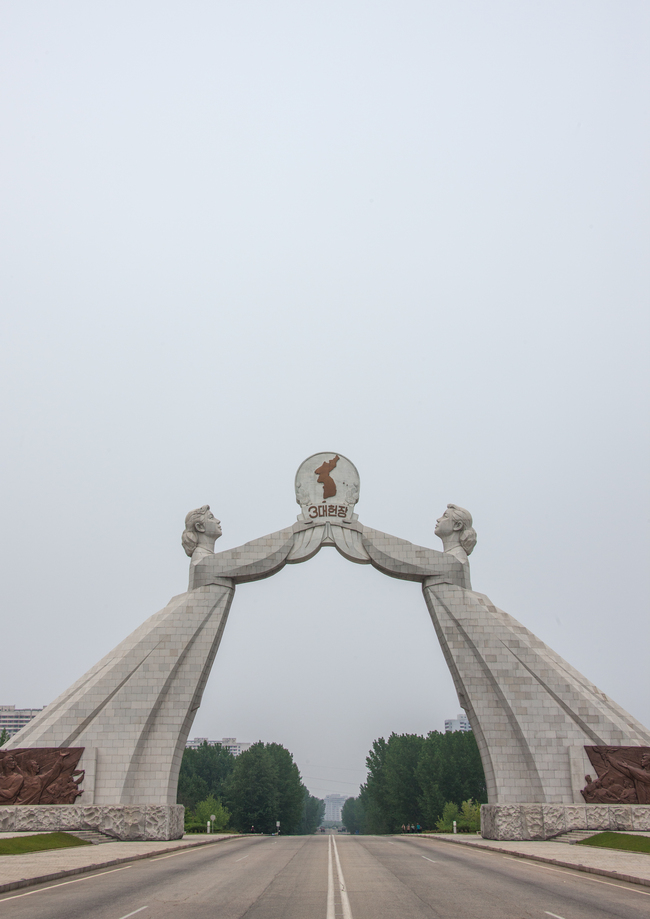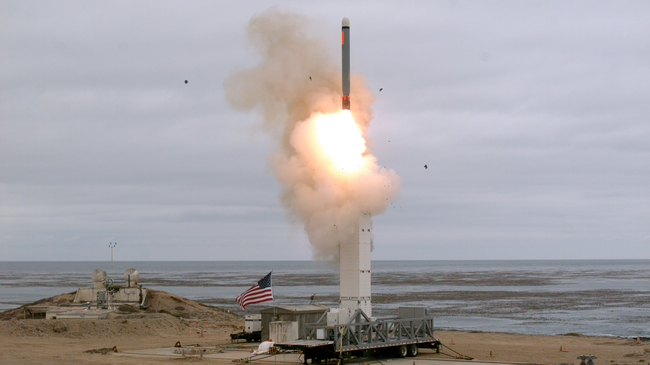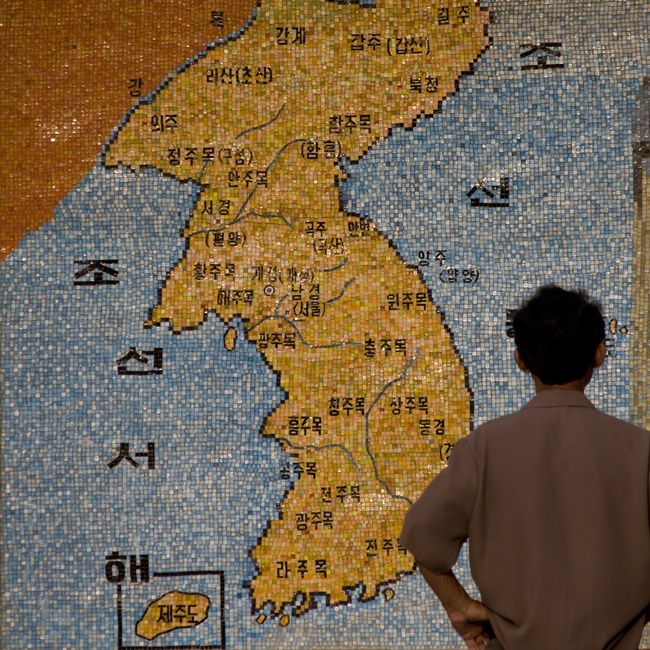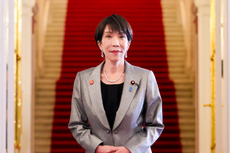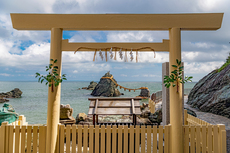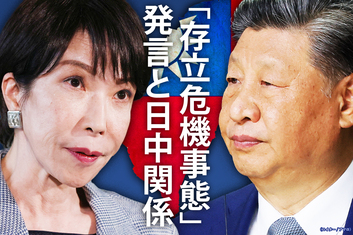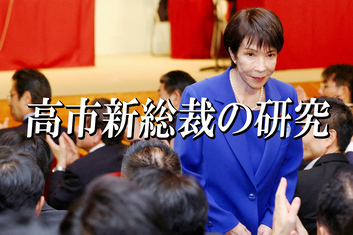This article provides the full text of “Nuclear North Korea and Japan――The INF Option” (by Richard Lawless, former Deputy Undersecretary of Defense, USDoD), of which the Japanese translated version was published in December 2020 Issue of Wedge (November 20, 2020).
There is no longer any question about the North Korea’s status as de facto nuclear weapons state.
This situation may soon require Japan to make a critical decision.
Richard Lawless, former Deputy Undersecretary of Defense describes potential scenarios for the future and crisis on the Korean Peninsula.
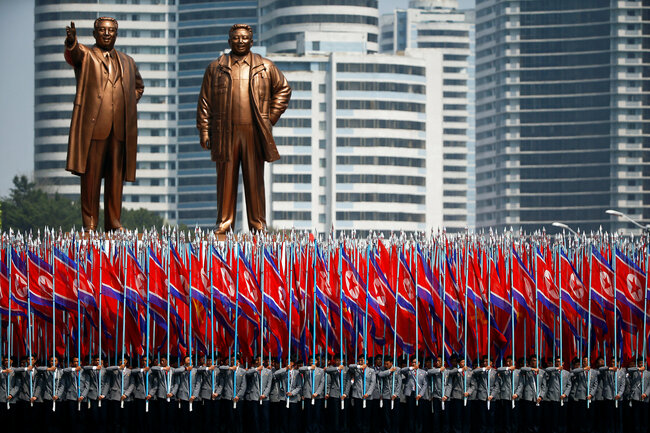
In the future, a unified New Korea may emerge on the Korean Peninsula, presenting a nightmare scenario for Japan.
Now it is time to give serious consideration to INF deployment to Japan as one of the options.
In May 2020 the young ruler of the Peoples’ Democratic Republic of Korea reappeared in public after weeks of seclusion, coincident with the announcement of a major initiative. To the applause of the third-generation helmsman of the Kim family dictatorship, the Central Military Commission of the Korean Workers Party had just pronounced a new strategic policy. Rather than something original, it was yet another threatening diatribe that North Korea had allowed to itself since becoming a de facto and self-proclaimed nuclear weapons state. According Kim Jong-un’s national security team, a fortification of the nation’s “nuclear war deterrence” was to be emphasized in the months ahead, signaling the probability of the testing and deployment of new nuclear weapons and missiles.
The political dynamic of Northeast Asia has been altered forever by a belligerent North Korea armed with a credible nuclear weapons arsenal. Complementing the weapons themselves is the ability to deliver these devices in war-initiating scenarios on the peninsula, regionally and beyond. Civilian targets in Japan and South Korea as well as U.S. military bases there and in Guam, are now held at risk. More recently the U.S. homeland found itself threatened by North Korean invective backed up with the promise of a real capability.
With these developments, the regime in Pyongyang became the ultimate poster child for the failure of U.S. and international nuclear non-proliferation policies. In that process of mastering nuclear weapons, a strategically placed impoverished nation overturned a regional balance that existed since the armistice that halted the Korean War in 1953. In recent years other factors have brought increased instability to Northeast Asia, most critically the rise of China to the status of a Great Power economic and military contender. But North Korea is a special case. It has defied every attempt to be constrained in its march to possess a nuclear weapons capability.
North Korea became the designated regional disruptor and a tangible threat to stability in Northeast Asia because nations which should have known better allowed it to do so. China stands at the front of the herd as the ultimate enabler of Pyongyang’s nuclear weapons program. China and other countries chose to ignore North Korea’s determination in the nuclear arena until it was too late. Recognizing the severity of the issue, China then worked hard to make North Korea someone else’s problem, namely the United States. At some point, the value of North Korea to Russia and China transitioned from that of a regional troublemaker that rankled the United States and its allies, to that of an irritating wild child liability. Whether China and Russia were asleep at the switch, or awake and willing to facilitate the problem by turning a blind eye, long ago became a moot point.
The North Korean strategic weapons program has now metastasized to the point that this regional antagonist cannot be disarmed or neutralized without substantial collateral damage, both to its neighbors as well as to the United States. With this regime we face a real-world capacity for massive destruction lodged in the hands of a belligerent and unpredictable government, a regime which is inclined to act out its ambitions with seemingly little concern for its own survival. Pyongyang is also congenitally inclined to engage in provocations that could well set off an escalatory cycle- an uncontrolled chain of actions that would lead Pyongyang to use its nuclear weapons.
North Korea is also as close to a nation-state terrorist organization as might be possible, eclipsed only by Iran in terms of duplicitous activity. Pyongyang can claim a first-in-class leadership position as a nuclear proliferator. This last characterization is important in that North Korea has demonstrated its willingness and ability to export sensitive capabilities that would enable other aspirants to become nuclear weapons states. The provision to Syria of a nuclear research reactor and chemical weapons, and the sale of ballistic missile technology to Iran are but two examples of the North Korean predilection to sell anything it has to anyone with the cash to pay for it. In this area of extended proliferation, the international community faces a defiant nuclear-armed North Korea increasing less capable of being constrained. We should therefore expect Pyongyang to engage in more of these types of nuclear proliferation initiatives in the future.
Nuclear North Korea in 2020
Today’s reality is that North Korea is an established and credible nuclear weapons state. Beyond simple plutonium based first or even second-generation fission devices, it is also apparent that Pyongyang has progressed its weapons designs to include boosted fission devices and may have approached a thermo-nuclear weapon status. If it has not yet arrived at that last destination, it is certainly knocking on that door, based on its stated determination to secure the same levels of nuclear weapons capability as that held by the major nuclear weapons states. All concerned must now acknowledge that Pyongyang’s ability to generate ever larger volumes of both plutonium and highly-enriched uranium, plus other critical materials required for more sophisticated weapons designs, elevate the North Korea strategic weapons threat to the level of weapons possessed by the world’s established nuclear weapon states.
Rising from a one-shot bomb builder to a program capable of designing, testing and deploying multiple types of weapons suggests that the North Korean nuclear threat will be with us all for a long time. The otherwise impoverished nation’s programs in ballistic missile delivery systems, incredibly ambitious in their own right, have provided Pyongyang with the ability to credibly target not only South Korea but Japan as well, a traditional enemy it deems to be deserving of a nuclear strike.
North Korean nuclear weapons atop deployed ballistic missiles can target U.S. bases in Japan as well as Guam and Hawaii, all of which unpin America’s entire political-military strategy in the Western Pacific. Such forward basing of U.S. forces is essential to plan for and execute contingencies relating to the growing confrontation with China. By holding these bases at risk, the North Korean regime creates deeper dilemmas and complicates U.S. planning, undermining our ability to properly address the China problem. More recently, North Korea has demonstrated the ability, albeit on a limited basis, to build and launch ballistic missiles which have an intercontinental reach, threatening the West Coast of the United States. Pyongyang’s intent is clear- it desires to hold the United States proper at risk of a nuclear strike, and is rapidly building a standing force capable of doing so.
Determined to impose its will on all of Korea, but with a reduced conventional capability to exercise this option, North Korea finds itself increasingly reliant on its strategic weapons as a tool to press the Seoul government. North Korea has successfully adjusted to this new situation to shift to a “nuclear first” approach designed to bend South Korea to its will. That capability allows a belligerent state that is constitutionally-mandated to reunify the peninsula, an instruction the leaders in Pyongyang have broadly interpreted to mean by any and all means necessary, to intimidate and cajole the balance of the greater Korean nation. Its goal remains unchanged- to create a compliant South Korea by effectively compromising South Korea’s founding and governing institutions. Pyongyang’s strategic weapons capability provides that tool of intimidation and South Korea is responding accordingly, prostrating itself to seek accommodation.
By alternatively suggesting compromise and then turning in place to threaten the use of force, nuclear Pyongyang enjoys a status and options that establish for it a superior standing vis-à-vis the state to the south. Armed with nuclear weapons and the bluster to threaten their use, it is clear that the Pyongyang regime has become the de facto “elder brother” who traditionally dominates the Korean family, expecting its younger sibling to accept the latter’s subordinate position. The North Korean ambition of 2020 has altered its end game since the days of the North Korean all-out assault on South Korea in 1950. During the Korean War, the North sought reunification at any price, laying waste to the south and exterminating its population in that bloody process. But with the nuclear hammer now in Pyongyang’s hand, it has a clearer path to domination and eventual conquest. As a failed economic basket case with nothing to offer the nation it desires to dominate, North Korea now seeks the opportunity to secure control over the wealth which South Korea possesses. Nuclear weapons present that option for such a subjugation.
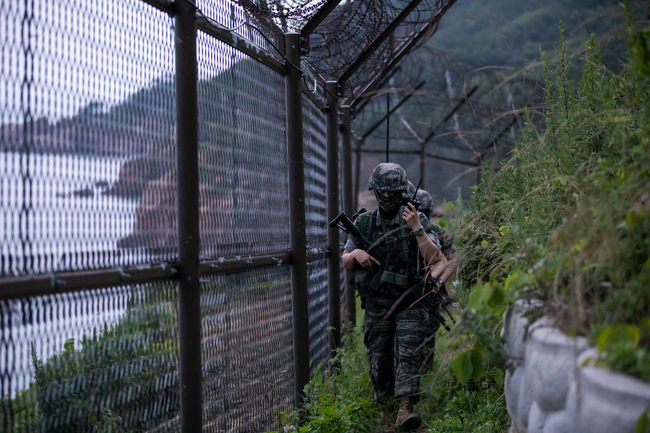
And while there is no reason to believe that the North Korean regime would strike preemptively at South Korea with nuclear weapons, its ability to do so enables Pyongyang to act more provocatively. One sees this happening either through one-off, limited-objective conventional attacks, or with unconventional and undeclared warlike actions. The very fact that South Korea does not possess the ability to counter the North Korean nuclear capability, at least on its own, inclines Pyongyang to be all the more aggressive, and South Korea to be all the more submissive.
Moreover, Pyongyang holds the threat of a nuclear counterstrike should Seoul respond to any North Korean armed provocation with other than retreat and acquiescence. This is a more than hypothetical scenario as North Korean provocations have a method of their own to their madness, with Pyongyang skilled at calculating the risk/reward value of its actions. The western sea area of the peninsula, where Korean War era demarcations are still in dispute and individual islands remain contested, is one such venue ripe for a North Korean military initiative. One easily imagined gambit would see North Korea occupy one or several of these uninhabited islands, initiating conflict but seeking only to humiliate the Seoul government by declaring them to have been permanently returned to their rightful owner.
The next step on a possible North Korean escalation ladder would be to threaten the seizure of larger islands that have both a South Korean civilian as well as a military presence, demanding that Seoul disengage by withdrawing. Forced to choose between open conflict or withdrawal, the current Seoul government would probably opt to walk away in the spirit of compromise. This very situation has played out in the recent past and will undoubtedly do so in the future. The North Korean objective is to dominate the political base in South Korea in a sequenced approach that incrementally imposes controls over the South. There are many scenarios available to a North Korea capable of nuclear dominance and, in seeking to placate its North neighbor, the south will only invite more of the same. The U.S. has belatedly realized that it is locked into an alliance with a weakened partner increasingly afraid to stand its own ground.
China- An Abetting Complacence
The relationship between the Peoples Republic of China and dynastic China’s one time and traditional supplicant nation, Korea, has never been easy. China under Mao Tse-tung was maneuvered into the Korean War by a combination of Kim Il-sung’s decision to attack South Korea, Stalin’s acquiescence and active support of that attack, and the unexpected reaction to that invasion by the United States and the United Nations. When the North Koreans had their hat handed to them by the U.S.-led counteroffensive, and United Nations forces pushed close to the Korea-China border in late-1950, Stalin essentially handed off the response to China. Mao was prepared and had little choice but to intercede with the Chinese Volunteer Army.
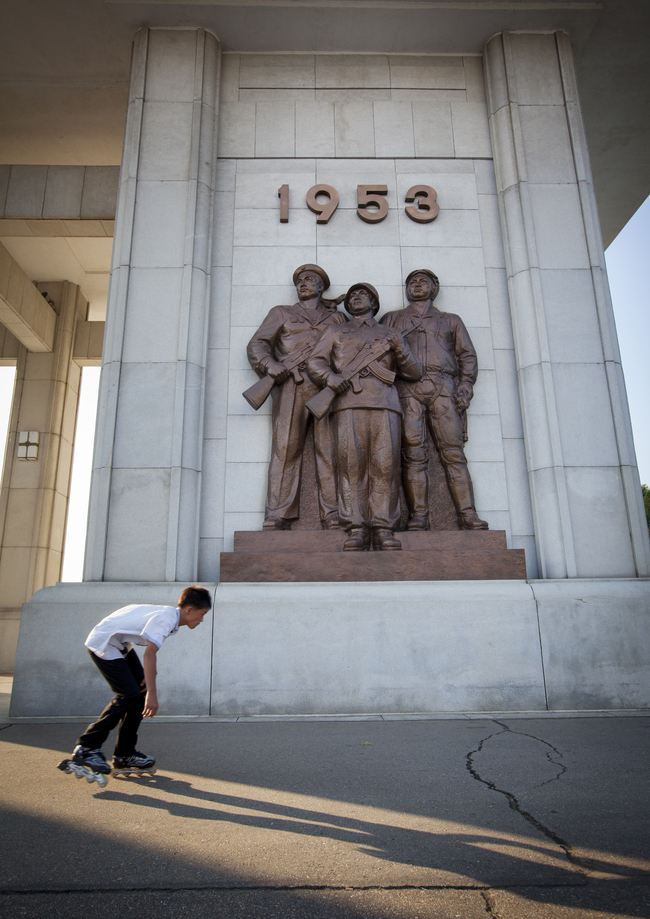
Mao’s commitment to two and a half years of war on the peninsula would involve millions of his soldiers and the death of hundreds of thousands, including his own son. The conflict would bond China to North Korea as a war-tested ally, ostensibly in a “lips and teeth” alliance, for decades to come. This was not a relationship that China needed or wanted and the two parties to this arranged marriage struggled to make it work. This is not to say that in 1950 China was an ambivalent warrior. Preparations for China’s defense of its border with North Korea had begun soon after the initial North Korean offensive in June and forces were positioned for direct involvement in the war. By the time the UN forces approached the Yalu, the decision had been made in Beijing to commit multi-division armies under the rubric of the Peoples’ Volunteer forces.
But the Korea War came to the Chinese leadership as a costly political and military distraction. In committing itself to enter the Korean War, China was forced to forego preparations for a planned invasion of Taiwan, which it planned to mount in the fall of that same year. Extensive Soviet assistance in planning, material, weapons (including the first batch of MIG-15 aircraft) were to be involved in that final offensive against the Kuomintang. As the United Nations forces overran North Korea and approached the Yalu River boundary, Mao had no choice but to abandon the Taiwan front and reallocate his forces. Stepping into the Korean War, China would see its window of opportunity on Taiwan close for decades, creating a situation which remains unresolved some seventy years later.
Once committed to the war in late 1950, Chinese forces pushed the U.S. and allied forces back down the peninsula, inflicting defeat after defeat on General MacArthur’s command. The United Nations managed to regain much of its lost ground but a hard-fought standstill resulted along a line of combat that was not that far from the original boundary between the two Koreas. By this point the UN had voted to reunify the peninsula under the leadership of South Korea’s Rhee Sung-man so that the Chinese intersession was more than a rescue from defeat- it was the salvation of North Korea from oblivion. China, never loved by any Koreans and accustomed to treating the entire nation with disdain, resented the thanklessness exhibited by Pyongyang. In returning that disrespect China demanded and received an equal seat at the Armistice table in the Summer of 1951 when the warring parties sat down to begin negotiations, talks that wandered for two years as the armies continued the fight.
In subsequent years, as North Korea rebuilt itself with the help of the Soviet Union and China, the North Korean leadership tolerated both nations. But it also leveraged each against the other to secure maximum assistance, all while holding them both at arm’s length politically. China, and to a lesser degree the Soviets, were accorded no special privileges in Pyongyang beyond the most rudimentary interactions. Both found themselves bound to support that war-ravaged nation as the Cold War settled into place in Northeast Asia. North Korea, functioning as a troublesome burden and dependency, traded raw materials with its allied communist states in return for economic aid and the weapons it needed to accelerate the reconstitution of its conventional forces.
During the 2003-2005 Six Party Talks in Beijing, where I served as the deputy head of the U.S. delegation, the tense and untrusting relationship enjoyed by China with North Korea was on active display. When the Chinese tried hard to press the North Koreans to engage productively, the Pyongyang delegation resisted and the Chinese frustration grew. The Chinese successfully characterized themselves as the “hosts” of the discussions, as a neutral party offering its good offices to find some compromise, no matter how remote the chances. But it was soon very clear that the Chinese were intimidated by Pyongyang’s erratic behavior and realized that the North Koreans were not in Beijing to compromise.
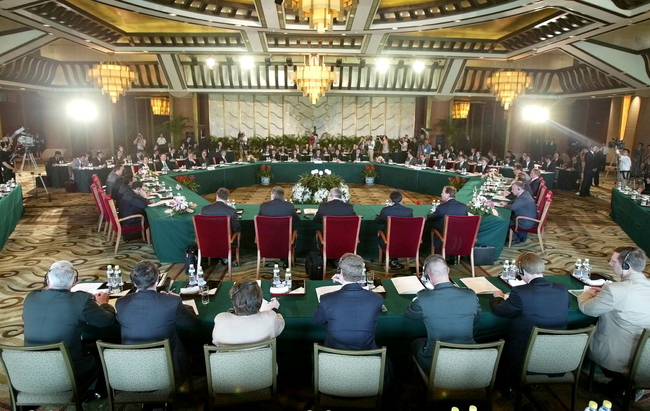
The Chinese side made it clear from the outset of those talks that they accepted no responsibility for what North Korea had become- a nuclear weapons state- and that China state policy dictated that all blame for the current situation on the peninsula should be assigned to the United States, Japan and South Korea. This posture was most unfortunate as China made no contribution to a resolution, continuing to stand to the side as it had done for over twenty years as North Korea had its way with its strategic weapons program. This was not a revelation but a validation that this lack of influence on the part of China was the reality of that relationship.
What this did bring home to our delegation, as well as to the Japanese and the South Koreans, was China’s total inability to apply pressure on North Korea and an unwillingness to do so even if a consensus approach created such a possibility. In the following years, China would continue to double down on its inclination to stand by and watch events play out as North Korea detonated nuclear devices and provocatively launched its missiles. When the United States and other like-minded parties introduced resolution after resolution in the United Nations designed to sanction and discourage disruptive North Korean behavior, the Chinese either watered them down or rejected them outright. This was a recurring frustration within the U.N. Security Council and a harsh testimony to that organization’s impotence in the face of North Korean provocations.
More bluntly, in spite of the fact that Pyongyang was building a nuclear arsenal on Beijing’s very doorstep, China was intimidated by its neighbor and unwilling to be part of any solution that involved pressuring Pyongyang. In UN Security Council deliberations, during the 2005-2008 period and beyond, China’s complicity deepened based on an arrangement it had with Russia whereby the two countries would follow China’s lead on all issues related to North Korea. (Russia had the lead on all UNSC activity related to Iran and China dutifully tagged along to endorse all Russian interventions favorable to its client state, Iran.)
This China-Russia foul-force partnership served to shield both North Korea and Iran from a host of UNSC initiatives. China would continue to coddle North Korea during the eight long years of the Obama tenure, helping that Administration discover a host of excuses to ignore the problem. The result of this studied indifference on the part of Team Obama was to deposit the smoking excrement of Nuclear North Korea on the front lawn of the White House in early 2017 when the Trump Administration took over. North Korea would present itself as an ugly problem for the new president to wade into with both feet.
This same reluctance by China to proactively address the North Korean strategic weapons program remains the case in 2020 and there is no sign that this calculated ambivalence will change in the future. Thus, China has not been, is not now and will not in the future be part of any solution related to North Korea. The lesson for nonproliferation advocates and doubters is obvious. A nation can violate every aspect of an international consensus on strategic weapons development and deployment, exit the NPT and reject IAEA supervision, ignore political condemnation (mere words), suffer through economic sanctions (deeds), and proceed as planned to disrupt the entire security dynamic of a region of the world in which all the major powers are active. As an ostensible “stakeholder” in the consensus approach to achieving a better world order, China’s unwillingness to stand up to North Korea for the greater good of the region and the world must be seen as a glaring failure.
An Increasingly Irrelevant South Korea
Pyongyang’s nuclear capability and its willingness to create and sustain a confrontational posture vis-à-vis Seoul well positions it to disrupt and discredit the democratic institutions that have taken root so well in South Korea. This is important in the longer scheme of things on the peninsula in that this same confrontational approach allows North Korea to threaten the viability the South’s economy, bringing home to all the vulnerability of that nation to uncertainty, disruption and fear.
We also have the overlay of Seoul’s current progressive regime that is deeply dedicated to “peace in our time” and willing to accommodate itself and its people to North Korea, in an almost master-slave relationship. Such weakness gives Pyongyang increased confidence that this is a reasonable strategy, albeit one that has real time constraints. Pyongyang has misread the domestic situation in South Korea before, assuming that it can risk confrontation to achieve it ends. As things are now trending, all signs in Seoul point to a fluid and susceptible political dynamic that invites intervention.
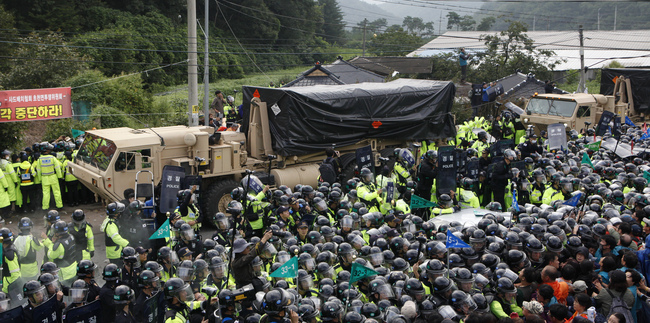
Another element in the current Korean nuclear equation relates to the South Korean relationship with the United States, specifically the US-ROK alliance and the nuclear deterrence feature that underpins that security commitment. We now have a progressive South Korean administration, a democratically elected leadership group that will serve until at least 2022. The Moon Jae-in administration is strongly inclined to seek a relationship with Pyongyang that bargains away its own sovereignty. In the pursuit of this goal, the Moon team finds itself much less comfortable with the alliance. While the Moon government is increasingly willing to accept the security that the alliance provides by taking it for granted on a good day, it is also inclined to denigrate the alliance the next when political expediency suggests it should. On those occasions when new openings with North Korea appear to be on offer, Seoul routinely opts to sacrifice the alliance and undercut its readiness as a deterrent force.
This same Moon administration also manages to convince itself that the United States is to blame for failures in Seoul’s own approaches to Pyongyang. As a progressive regime, Seoul finds itself embarrassed by Pyongyang’s pursuit of a direct relationship with the United States at the obvious expense of Moon and company. In so doing Pyongyang emphasizes that Seoul is of only secondary importance, and thus the odd man out in the three-party equation. This unfortunate situation between South Korea and the United States will continue over the next two years of the Moon administration, all to the advantage of the North Korean regime.
China has also managed to put Seoul on the defensive as the Moon government embraces a “straddle strategy” that attempts to balance its interests with China against South Korea’s relationship with the United States. Committed to this path, Seoul finds ways to “compromise” with China in a manner that degrades the credibility of the US-ROK defense relationship. The South Korean approach to the recent deployment by the U.S. of its THAAD missile defense system is a glaring example of a self-emasculating and reduced South Korea. When the United States decided that this missile system was required to defend the U.S. military presence in Korea, a presence that resides there to defend Korea from attack, China complained and pressured Seoul to decline the introduction of that defensive capability.
A Seoul capitulation to China’s demand that the U.S. not be allowed to position the THAAD in the ROK would have constituted a prima facie violation of the letter and spirit of the alliance. As discussions played out, the ROK dithered, unable to reconcile its split loyalties. Determined to install a defensive system to protect its own forces from North Korean missiles, the U.S. pushed slowly forward to coordinate the deployment with Seoul. South Korea resisted and sought on bended knee to find a middle ground that would placate China.
The sad result was a humiliating policy surrender that witnessed the ROK Foreign Minister travel to Beijing to pronounce, with no little fanfare and to Chinese satisfaction, the “Three No’s” of Seoul’s new-found THAAD policy. This formal statement assured Beijing that Seoul will not consider any additional THAAD deployment in South Korea by either the US or the ROK, that Seoul will not consider joining US in any missile defense system by mating THAAD to any ROK missile defense system, and that Seoul will not consider joining any US-ROK-Japan regional missile defense system. This shameful performance by the Moon government was followed by organized resistance on the ground in South Korea by pro-North Korean activist protestors who sought to disrupt the construction of the facility itself. These Blue House-sanctioned actions delayed the deployment of the system, reduced its efficiency and served notice that the Moon administration was prepared to accept a degradation of the alliance.
In another critical area, the Moon administration delayed, downgraded and often cancelled joint military exercises designed to maintain alliance readiness and credibility. These types of tangible issues will continue to dog the alliance and make the United States less committed to remain in the current relationship, which is the precise objective of Moon and his program. Not coincidentally, the Pyongyang leadership shares these same goals and encourages the South Korean government down this road of alliance degradation and movement toward its eventual termination.
As the quality of the U.S.-ROK security alliance deteriorates, it is useful to reflect on how far the deterrence provided by nuclear weapons has been reduced during the same period that North Korea was developing its own credible nuclear threat. In the years immediately after the Korean War, U.S. planners were convinced by intelligence assessments that North Korea would not be able to rebuild its capacity for a second invasion. They initially assumed the U.S. could reduce its force structure in the ROK and defer indefinitely the introduction of nuclear weapons.
But as the Cold War equation evolved during the balance of the 1950’s, the U.S. came to recognize the extent of the North Korean conventional build-up. Of equal concern was the forward-posturing of these forces just north of the DMZ in a manner that would allow an attack with little advance notice. The realization that this expansion of capabilities would continue forced the U.S. military to conclude that the U.S. had no choice but to deploy tactical nuclear weapons in Korea. The reasonable concern was that the North Korean offensive buildup might encourage the Pyongyang leadership that a second Korean War was a possible option.
Although the first increment of U.S. nuclear weapons was introduced reluctantly, these tactical systems soon became part of the United Nations Command war fighting plan and they stayed for decades. More and better tactical nuclear weapons arrived and the rest is history. By 1964 no fewer than ten different tactical nuclear weapons systems had been deployed into the ROK by U.S. forces, where they remained in the hundreds until removed by President George Bush in 1992. With these U.S. tactical nuclear weapons now long gone, the deterrence they provided by their physical presence on the peninsula has evaporated. These or similar systems will not be returning. This fundamental change in the nuclear calculation on the peninsula sets the parameters for the next stage in the evolution of the nation of Korea.
With that departure of U.S. conventional forces, including the politically contaminated THAAD system, the U.S. nuclear commitment will terminate. This will be the reality irrespective of any attempt to mitigate the situation by deploying eyewash “assured deterrence” statements. Absent the formal US-ROK alliance, the United States will not go to war in the case of a military conflict on that peninsula, no matter how that action comes to pass. Once the alliance is terminated, no scenario suggests itself in which the United States would intervene, be that intervention conventional or nuclear. North Korea knows this, as does China, as does Japan.
There are several scenarios for the U.S. disengagement from its current Korean security obligation. First and more likely, a rapid departure triggered by a sharp deterioration in the bilateral political relationship, coupled with U.S. acceptance of a new reality that says “it is better to leave now than delay the inevitable.” Such an exit would be inspired by the progressive government in Seoul which perceives a half-baked alliance as a path for reunification with North Korea. Sensing this ploy, the considered U.S. reaction would surely be that it wants no part of such a tar baby relationship with its one-time partner South Korea. Even in an extended and more painful case, the alliance would be done and over by 2030.
Considering “New Korea” Scenarios
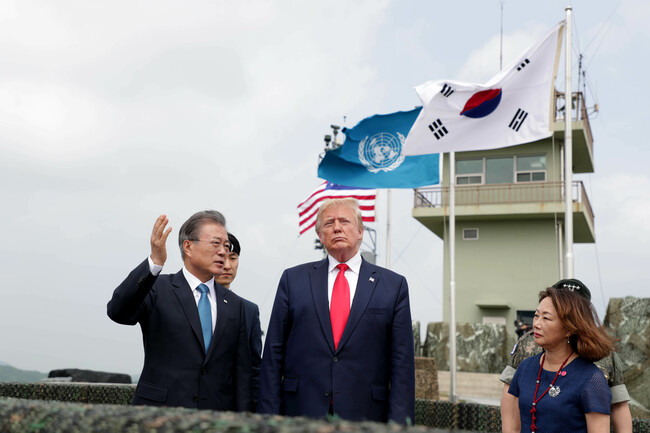
Irrespective as to how the U.S.-South Korea relationship plays out, Japan will look across its western waters and see one of three possible “New Koreas”. Ideally, we would have a Republic of Korea that continues as it is- that is, a democracy which ostensibly controls its own territory, but has exchanged the U.S. alliance for a position of permanent subordination as a nation to North Korea. Pyongyang will use its nuclear trump card to compel its younger brother to do as it wishes. Even in this best-case scenario, North Korea will be able to find common ground with the South, politically and emotionally, in viewing Japan as a hostile entity. The South Koreans have already convinced themselves that most of Pyongyang’s missile force exists to threaten Japan and not fellow Koreans. Genetically predisposed to embrace this mentality, Koreans both North and South will be inclined to bond to take a more open and aggressive stance toward Japan once the United Sates has left the ROK security equation.
A second but much less likely scenario would see a South Korea still politically independent of North Korea but free of the strictures previously imposed by the U.S. alliance. This would likely lead to Seoul electing to build its own nuclear weapons capability. This would be the case if a less-progressive government replaced the Moon administration with a regime which was determined to hold North Korea at some respectable distance. Such a conservative administration would resist the embrace of the North that is desired by the progressives and seek to rebuild the ROK security relationship with America.
But, even in the case of such a potential return toward the traditional U.S.-ROK alliance, there would very likely be a strong call from those same conservatives for a sovereign nuclear capability. There are already calls among the South Korean body politic, from conservatives and from some progressives, for the ROK to reconsider its earlier decision to forego nuclear weapons. These advocates cite a requirement to achieve some level of parity with North Korea so as to better resist the subordinate position that already exists. One should expect these calls to action to grow as North Korea expands its capabilities.
Many South Koreans, again both progressives and conservatives, quietly respect what North Korea has achieved with its nuclear weapons program. There is an unspoken but tangible pride of Korean achievement delivered by Pyongyang’s success with its nuclear weapons program. Many see Pyongyang has having elevated the “Min Chuk” or “Korean folk” of the peninsula to its natural place in the region with these weapons systems. A South Korean nuclear weapons program would naturally be viewed with resentment by the North, portending a possible conflict on the peninsula at some point. In Japan such an event would be seen as an absolute disaster- two Koreas, each with nuclear weapons, competing to see which nation could find the most creative paths to intimidate their traditional enemy, Japan. The ability of the United States to constrain this eventuality, absent the enforcement mechanisms of the US-ROK alliance, would be minimal.
A third scenario, also unlikely in the near-term but more probable in the long run, is a unified or “confederated” Korea in which the two countries forge themselves into a single national entity. This would involve a rush to achieve a peace agreement- sometimes hyped as an “end of hostilities” joint declaration- that would promote and allow a limited integration across the full peninsula. Such a two-systems one-nation approach is highly attractive to South Korean progressives who are naïve enough to rush into such a peace agreement, its Munich-like consequences be damned. This type of arrangement would also trigger the end of the UN mandate, the disestablishment of the UN Command, and the likely departure of US forces.
Of course, such a provisional arrangement would be welcomed by Pyongyang as but the first step in the reverently anticipated and long-delayed absorption of the South by the North. Such a confederation would aspire to a Swiss-like end state with the two countries maintaining their respective territorial integrity, for a “decent interval” period at least. But once the political and economic integration picks up momentum, with external tasks increasingly shared by the two states, it will be difficult to not arrive at a point of North Korean dominance.
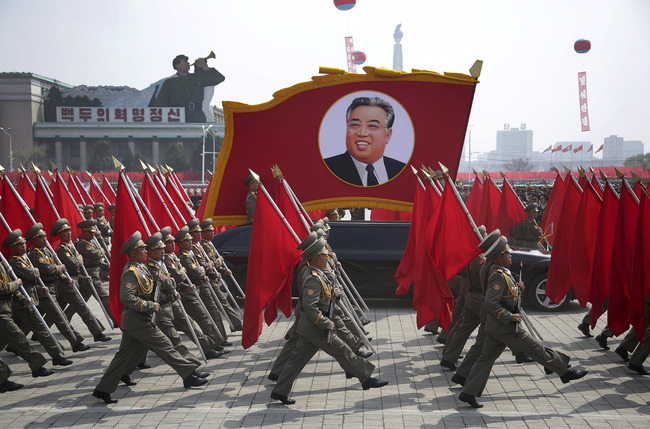
A variation on this same worst-case scenario could involve a North Korean collapse due to any number of calamities. These could include a leadership struggle, with the South Koreans inserting themselves to take a heavier hand in the North. If an integration under South Korean leadership did occur there is little doubt that Seoul would elect to do all possible to secure as its own all aspects of the North Korean nuclear program. It is probable that South Korea would consider surrendering that strategic weapons capability to the international community, essentially by agreeing to dismantle and dispose of these systems. But this would only be possible if the successor state was confronted by a solid front comprised of existing nuclear weapons powers demanding that this be done voluntarily. With the real threat of force in the air the South might yield, but that desired outcome should not be taken for granted. Serious Japanese or American planners with exposure to the Korean mindset should assume that a collapsed or fractured North Korea would translate into a nuclear-capable new South Korea.
In any of the variations of this “New Korea” scenario, the full integration of the military forces of both countries, at least at the command level, would be inevitable. Such a concession and commitment by the South would be a central goal and a demand of the North. In the case of a North Korean collapse, the integration would occur in a de facto manner to the benefit of ROK military planners. In a scenario in which North Korea dominated the process, even if the command-and-control evolution was designed to occur only in a phased approach over many years, the net effect would be immediate. The unified or confederated nation would then be a political-military state of nearly 75 million people, a regional political power, as well as an international economic force.
This New Korea would possess a strong conventional military capability, to include the ability to project its air and sea assets across the Sea of Japan and beyond. The New Korea air force and navy would be a worthy opponent within the region, and while not a dominant one, would be adequate to cause others a great deal of heartburn. This is a capability that is being steadily put in place by the current ROK government. The buildup will continue into the future, not so much as a counter to North Korean capabilities that do not exist but rather as an offset to the systems of more traditional enemies.
In these New Korea scenarios conventional capacity would be overlaid by a nuclear weapons strike force of credible dimensions. The inherited North Korean systems and development programs would be injected with South Korean industrial potential and technological savvy. New Korea would be able to base this nuclear strike force throughout the geography of the entire peninsula, enhancing its ability to target the entirety of Japan with shorter range tactical systems. This is a New Korea scenario that should keep Japanese planners up at night, particularly if one is asked to anticipate the threat environment ten years into the future. Japanese leadership has every reason to fear this as a nightmare outcome should they allow themselves to be distracted, or otherwise discount beyond a reasonable point the potential for such an unpleasant reality.
A corollary reality that may need to be bluntly stated is that Japan does not today regard the U.S.-ROK security relationship, at least in its current form, as viable in either the middle or longer term. Even in a situation where the U.S. departs South Korea in a phased step-away, with a sequenced draw-down of the remaining U.S. conventional forces stationed there would portend the end of that alliance, and the removal of the buffer that the U.S. military presence there has offered to Japan. As a single catalytic event, the evaporation of the U.S.-ROK security relationship brings immediate consequences to Japan and, in and of itself, gives cause for a fundamental reconsideration of Japan’s exposure to evolved threats.
Japan- Awake to the New Reality
At the same time, the other critical U.S. security relationship in East Asia, namely that with Japan, increasingly shares the US perception of the nuclear threat from North Korea. It does so in several ways that are more extreme and more immediate than its American partner, for obvious reasons of distance, history and culture. The North Korean ballistic missile threat to Japan, as well as to US bases there, is better defined and more credible than any similar threat to the US homeland. The quality and variety of missiles targeted on Japan, the inherent vulnerability of Japanese cities and its critical infrastructure, and Japan’s likely inability to defeat fleets of incoming North Korean warheads, have combined to dominate national security planning there. Here the North Korean threat is not abstract nor hypothetical.
Japan has been satisfied with the “extended deterrence” provided by the nuclear umbrella of the United States since 1945. However, during these seven plus decades, the nation has been careful to assemble all of the critical elements that would be required to go its own way should Tokyo assess that American assurances are no longer convincing. North Korea’s nuclear hostility, coupled with a deep animosity between the two Korean nations and Japan, is a growing factor, as is the expanding assertiveness of China.
In the coming years, any Japanese perception that the U.S deterrent is less firm in the face of the increased threat of its two neighbor nations could well tip the scales toward a decision in Tokyo to do what is necessary with its nuclear expertise. As an unlikely, but certainly possible proliferation scenario, Japan as a nuclear weapons state should be recognized and planned for by the United States. This scenario for a nuclear breakout on the part of Japan presents an obvious challenge and opportunity for future nuclear intelligence collectors and policymakers.
In 2020 the Japan security establishment, until recently led by Prime Minister Abe, has snapped alert to the magnitude of the North Korean threat. The potential for short and intermediate range missiles departing North Korea in salvo-fire volleys from mobile launchers has grown more acute as Pyongyang’s missile force converts from its current fleet of liquid-fueled No-Dong systems to a new generation of solid-fuel missiles. These next-generation systems involve improved missile trajectories and maneuverability, reduced launch times, and improved accuracy as warheads become more compact and efficient. Japan has every reason to fear North Korean nuclear strike capabilities and will need to plan for this ever-evolving threat. And Japan realizes that it must do so with or without the benefit of the US nuclear umbrella extended by the Alliance.
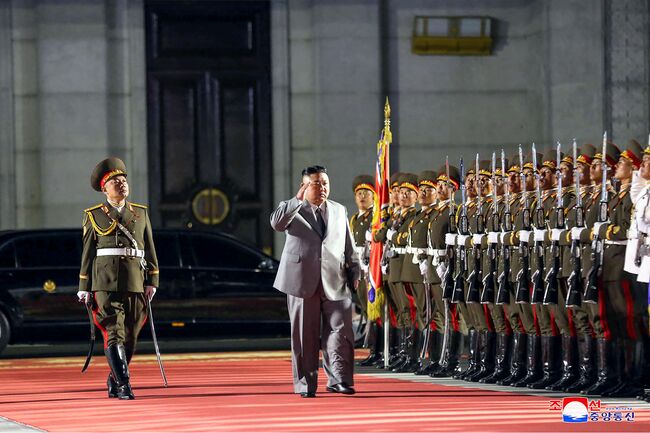
The companion issue for Japan is intent, that is, the likelihood of a hostile nation using a strategic weapon to strike Japan. While the threat posed by China to Japan is real and growing, and China’s conventional and strategic capabilities are many times that of North Korea, Tokyo still regards Pyongyang as the most likely adversary in the near term. With logic, Pyongyang is viewed as the most inclined among nations hostile to Tokyo to use a nuclear weapon against Japan. The Japanese know well, even if others in the region are inclined to forget (and here the South Koreans are purposely forgetful) that North Korea long ago convinced itself that the only reason that its 1950 invasion failed to overrun the peninsula was America’s ability to base its response from Japan.
Japan also knows that, absent the security relationship with the United States, it is alone and vulnerable in its East Asia neighborhood. Beyond the inherent hostility of China, Russia, and North Korea, all nursing long-standing grievances, Tokyo must deal with South Korea as a non-ally, and potentially hostile force. The geography of Northeast Asia is a forcing function- with the Korean Peninsula thrusting itself toward the four main islands of Japan. This dynamic has existed since time immemorial and been the catalyst for wars fought among Japan, Russia, China and Korea.
Japan must now plan for the inevitability of a unified Korea which combines the nuclear capabilities of the North and the economic strength of the South. For Japan this would represent a deadly combination of capability and hostile intent. An unfortunate given is the strong possibility that any unification or confederation between the two current Korean states would embrace a shared hatred of Japan as a key element of its bonding mantra.
All versions of the New Korea reality would see the United States having departed the South Korea security scene, ending the alliance. With that no-fault divorce, the U.S. would have withdrawn from South Korea the “assured deterrence” previously provided by the U.S. nuclear umbrella. North Korea, based on its political position there and the physical presence of its military capabilities, would have replaced the United States as the nuclear guarantor for the entire peninsula, postured to strike at all enemies, real or imagined. The United States, desiring to maintain a forward posture in East Asia, would fall back onto Japan, opting for a broad strengthening of its commitment to and military relationship with that country.
Critical Decisions for Japan
This brings us to the ultimate national security decision that now pends, for the United States and for its bilateral Alliance partner, Japan. Tokyo must assess its options, and plan its own course, by taking into consideration what should be possible in the context of the Alliance. But Japan must also plan and prepare for what may be necessary absent that Alliance. Japan does not today regard the U.S.-ROK security relationship, at least in its current form, as viable in either the middle or longer term. Even in a situation where the U.S. departs South Korea in a phased step-away, with a sequenced draw-down of the remaining conventional forces stationed there will portend the end of that alliance.
All of this suggests that Japan and the United States, separately as sovereign nations and together as an Alliance, must make several critical decisions within the next year or so about their security relationship. The U.S.-Japan Alliance cannot remain as it stands in 2020. It must either be refined and deepened or allowed to become less relevant to Japan’s security needs. To attempt to leave the Alliance as it is will be a recipe for its demise for the simple reason that the present construct cannot endure in the face of the combination of the expanding destructive capacity of North Korea, the evolution of alignments on the Korean peninsula and steady rise of a more muscular and assertive China. Security planners in both nations have been inclined to minimize these concerns with promises to soldier on, citing the Alliance as stronger than ever and capable of responding to any and all security threats in the region.
This positive attitude on the part of both governments, accompanied by incremental improvements in Japan’s national security structure and force posture, plus better coordination with the U.S. has worked well up to this point. But Japan now must face a new reality. The core of that awakening is that the U.S. nuclear guarantee must become more credible, more tangible and much more certain across a range of response scenarios than has been the case in the past.
Japan knows that conflict with North Korea, and at some point, with the New Korea posited above is likely. The timing and circumstances are unpredictable but let there be no doubt, these exchanges will potentially be highly kinetic. As an initiator of conflict, Korea will be inclined to escalate and will resist intervention by a third party, namely the United States. In the case of a Japanese conflict with China, an incident or provocation will place Japanese leadership in a position of either responding in kind or backing down, with or without the benefit of a U.S. partnership response. Again, third party mediation may save the day once but the die will have been cast for a renewal of that traditional conflict. In such a case a U.S. conventional response in support of Japan must be real-time and forceful. The promise of the U.S. nuclear backstop to that conventional response must be ironclad.
Increasingly, Japan will need to be certain that it can count on the U.S. to be in the conflict mix from minute one of any engagement and that assured deterrence will be available if matters escalate. In the case of a North Korean provocation, this could all occur within minutes of an initial exchange. This level of certainty is not necessarily the case today. The U.S. conventional commitment, in response to a fast-moving conflict or standoff, could be delayed or hedged for tactical reasons for any number of good or bad reasons. This could involve an absence of a capability in place, or the requirement for the actual commitment of US forces compelled to await Washington D.C. decision-making. With a U.S. conventional engagement deferred or delayed, the American nuclear commitment will lag, with the result that this US delay will cause both Japan and Japan’s aggressor to doubt that the US would actually use nuclear weapons in the defense of Japan.
A Proposed U.S.-Japan Alliance Response
The only way a U.S. conventional and nuclear deterrent can be made credible for Japan, with assurance of that ultimate deterrence made clear to its potential enemies, is to introduce INF-systems to the mainland of Japan. Specifically, members of the next-generation of systems now under development by the United States, capable of delivering both conventional and nuclear warheads to targets in the region, must be stationed in Japan.
Ideally these next-generation INF systems would be deployed deep within the context of the Alliance, in a dual-key arrangement similar to that which has served NATO so well over the decades. This would require an integration of the command and control structure associated with the Alliance, with parallel release authorities held by the national leadership of both nations. These systems would be assigned both tactical and strategic targets based on advanced joint planning, and options for their use would be well-rehearsed and practiced so as to drive home the quality of that joint deployment.
The advantages of such deployed weapons systems, either of a single type or in multiple variations, permanently based on the territory of Japan, would be four-fold. First, such a capability would firm up the credibility of the Alliance and the credibility of the U.S. commitment to protect Japan and the U.S. force structure based in Japan. It is assumed that, concurrent with the decision to deploy INF-class weapons, the conventional U.S. force structure, as well as the Japanese companion structure, would be expanded to defend the INF systems.
This would be essential to best leverage the presence of those systems so as to increase the capacity of Alliance forces committed to defend Japan and the region as well. In other words, the decision to deploy a dual-command INF capability would involve a major realignment of the current U.S. presence in Japan and a Japanese commitment to significantly increase its own conventional laydown. All of this would have to be done in the context of a revised agreement on Alliance roles, missions and capabilities. This is absolutely achievable.
Second, the stationing of INF systems in Japan would speak to the hostile powers of the region in an unambiguous way that could not be intentionally misunderstood. China would know with 100% certainty that any escalation of conflict with Japan would cross the line of U.S. direct involvement much sooner than is now the case. In the future Chinese capabilities to cause trouble will expand in all dimensions of national security- at and under the sea, in the air, on land and in space. Thus, the discussion on INF system deployment must stay abreast of and counter the Chinese increase in raw military capability and demonstrate that the improved U.S.-Japan security posture is anticipating and adapting to the threat.
Chinese military planning assumes that its forces have a range of options when confronting a lesser power, be that nation Japan, Taiwan, Vietnam or Brunei. Such escalatory courses of action on the Chinese menu of national strategies include raw intimidation (from boat ramming to economic pressure), staged confrontations by non-military forces (the extended presence of Coast Guard vessels or aircraft designed to infringe in national waters so as to alter the status quo) and direct military activity which China itself deems to be “actions short of war”. The presence of conventional INF strike systems in Japan would signal an ability and a willingness to match China rung-for-rung on any climb up the Chinese ladder of escalation. Cold calculations of risk/reward would encourage Beijing to think twice before approaching that ladder in the first place.
In the case of North Korea, and more so in the case a single New Korea, a U.S.-Japan Alliance INF force which is dual-capable would erase any doubt in the minds of Pyongyang or Seoul decision makers. It would make obvious that a Korean conventional or nuclear attack on Japan would result in nothing less than the destruction of the attacking entity, regardless of what flag it flew.
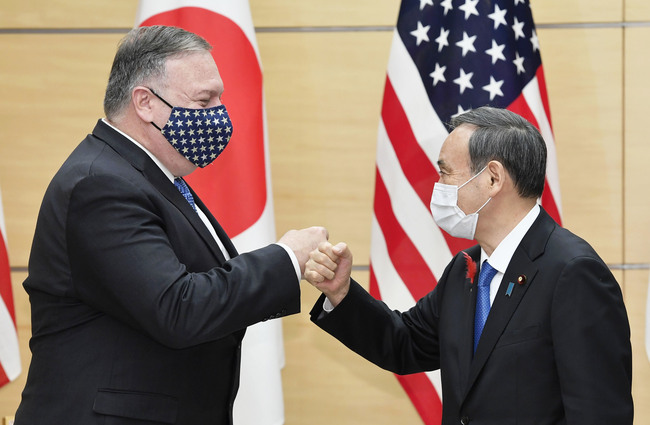
This is important because the Korean mindset will likely remain that Japan is its forever nemesis. There is a parallel expectation on the part of many Koreans that some combination of factors would allow them to strike Japan without the United States responding, and that once Japan is struck, the U.S. would be inclined to avoid an escalation to the strategic level. Bringing the threat presented by INF systems to the frontline of the Korea-Japan sea boundary would basically place next-generation systems on the doorstep of North Korea where this nuclear capability has been absent for three decades. This positioning of a visible deterrent would checkmate the range/time-to-response disparity that now exists between North Korea and Japan, given Japan’s current reliance on the less visible (hence less credible) U.S. extended deterrence posture.
Assuming a scenario where peace is not at hand with North Korea and the latter is instead facing a deployed U.S.-Japan INF force, North Korea would be inclined to continue to expand its nuclear forces. But it is also possible that North Korea would be forced to reckon with the new reality of determined U.S counterforce and accept that it is pursuing a zero-sum game. Such a realization might even encourage Pyongyang to find another path forward and begin a meaningful engagement that reduces the increased threat that would then exist to its national and regime survival. Bottom line, in the case of deterring North Korea, a permanent INF return to Japan should be seen as an all gain and no loss proposition for any party looking to better ensure the security of that country, a no-brainer in terms of enhanced deterrence.
Third, a deeply-integrated Alliance commitment to deploy and operate nuclear capable INF systems in Japan will, for the life of that deployment, dissuade and deter Japan from going its own way to build an out-of-alliance sovereign nuclear force. This is a decision it could easily make tomorrow or next year. And it is a decision which Japan will be increasingly inclined to make in the absence of a well-defined, physically present and totally credible U.S.-managed nuclear assurance. Japan today is capable and increasingly inclined to explore this option. An Alliance shared-key INF system would fill this requirement for absolute certainty. This would be particularly so if it were well laced together at the national leadership level based on a sophisticated real-time decision-making (release authority for the weapons use) matrix.
Fourth, it is very possible that the existence of such an Alliance-based INF presence in Japan would encourage a regional if not global approach to limit and contain INF-class systems. That is, the regional INF issue would be addressed as part of an international process to create new treaty and enforcement mechanisms that could replace the recently abandoned INF treaty. The latter became useless because the US government was compelled to acknowledge blatant Russian cheating which extended for over a decade, the boldness of which promised that there would be even more duplicity if the treaty was extended.
More importantly, the unwillingness of China to become a party to such INF limitations weighed heavily on the security planners of both Russia and the United States. A central fact in the current situation is that there can be no viable or effective, let alone respectable, INF arrangement absent the involvement of China. Beijing’s reluctance to even consider participating in an INF-like treaty is rooted in its rejection of a “stakeholder” approach to any international convention or norm, except those from which they can game self-serving advantage. In this case, a unique combination of factors could compel a Chinese re-think of its approach to INF arrangements. China would face an Alliance INF capability on Japanese soil, the ever-improving North Korean ballistic missile and nuclear capability, the inherent unpredictability of that regime and its actions, plus greater Korea’s traditional hostility to any attempts by China to impose its will on the peninsula.
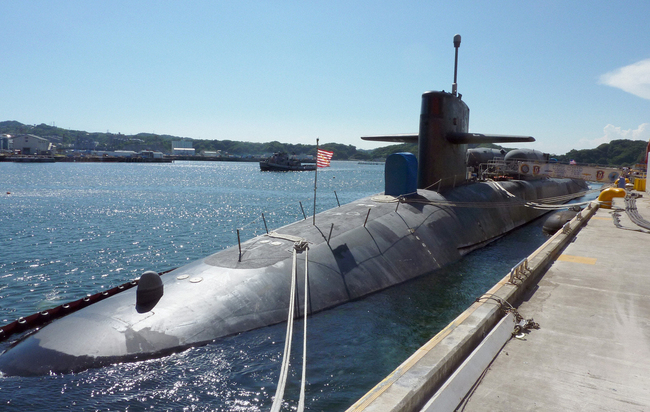
Among all these incentives, a Japanese key for INF system in hand could encourage China to consider an INF approach that seeks controls and limitation on INF systems across the board in Europe and Asia. China could see Korean and Japanese inclusion in such an INF constraining arrangement as a compelling reason to negotiate on INF, if only for China to have a venue to directly address the Japanese and Korean aspects of this emerging concern. This suggestion may be a long reach, but absent compelling reasons external to the current U.S. and Russian INF construct, there is little chance that the Chinese would ever be willing to sit down for such a discussion. Often times, by enlarging the scope of the problem we find ways to solve all or important elements of that problem.
Finally, another INF scenario for Japan could be the same Alliance-centric dual key control mechanism deployed aboard jointly crewed ballistic missile submarines. This system would be jointly funded, jointly owned and operated by combined crews detailed for service in a crewing program staffed by the navies of the two nations. By system definition and classification, the on-board INF systems would be regional strike weapons and include both conventional and nuclear variants. This would permit the operation of the INF systems to occur off-shore but be based in both Japan and U.S. territory (Guam), thus creating a capability that would be more survivable and even more credible than the land-based option.
A further best-case would be to deploy the ground-based systems in Japan first, establish this iteration as the initial Alliance-controlled INF force-in-being. This would allow the time required for the sea-based component to be built and commissioned, as would be necessary with such a complex program. Both ground and sea-based capabilities could co-exist and separately evolve, with the sea-based element replacing the land-based component if that migration was judged to be of value to the Alliance.
At the other end of the where-goes-Japan spectrum sits nuclear independence based on a sovereign nuclear weapons program. This would include both the nuclear devices and the capability to deliver same, by ballistic missile, cruise missile, strike aircraft or even sea-based platforms. Notwithstanding the suggestion made by established Japan watchers, and self-proclaimed Japan experts who urge caution at every corner, that such a course is “highly unlikely or even impossible”, such a program is realistic as well as rational.
Depending on its leadership, Japan will do what is necessary to protect itself. To think otherwise is delusional. Today, in the face of North Korean nuclear threats, Japan considers itself uniquely vulnerable, in part because the incumbent U.S. national leadership has unwisely implied that the U.S. main concern over North Korea is that nation’s threatened ability to strike America with its nuclear weapons.
Japan is uncertain that the U.S. will go to war over Japan, viewing the U.S. as inclined to hedge its bets as a variety of scenarios surface and play out. Japan has every reason to be concerned that, even in the case of a North Korean attack on Japan, the U.S may equivocate and urge caution, delay making a decision or taking action, and in the end, possibly do nothing. Tomorrow Pyongyang could target a Japanese nuclear power plant, a military base or the Imperial Palace, electing to either strike or avoid a U.S. facility. This is not an exaggerated concern but rather reflects Japan’s arrival at a point of reality and decision that has been long deferred.
All that is required to trigger the nuclear option for Japan is a lack of confidence in the current security guarantees provided by the United States instigating and feeding the will to move forward with alacrity with a domestic program. To do so would involve a decision to sacrifice the Alliance, or key elements of that Alliance. However, Japan’s leadership may judge that this is the price it needs to pay to acquire the security it must have. Indeed, Japan as a declared and credible nuclear weapons state may have a lot to offer the United States as a security partner.
The U.S could elect to shepherd that transition, particularly if it tires of carrying the extended deterrence for others. In short, Japan could become a nuclear partner along the lines of that enjoyed with the United Kingdom. A U.S. departure from the ROK alliance and the consequent removal of the US nuclear commitment there would make this an easier decision to make. This would be particularly so if Japan asked to open discussions to create such a new nuclear partnership based on mutual commitments of extended deterrence that could benefit both parties. In this new Asian nuclear dynamic, anything is possible.
A View from Pyongyang
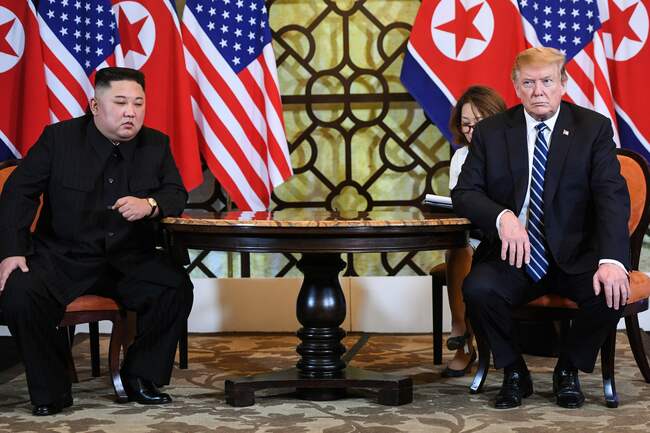
As Pyongyang coldly observes East Asia and beyond in 2020, looking across the Pacific Ocean to America, it may be frustrated that its overriding national obsession with its strategic weapons programs has not yet delivered the results it had anticipated. But all bluster aside, disregarding the tactical threats and mini-provocations, North Korea is in this for the long game and it may not be all that dissatisfied with where it has arrived. It has achieved the quasi-parity with the U.S. nuclear posture within the East Asia region simply by challenging American dominance on the strategic deterrence playing field.
This has been no small accomplishment, especially for a fourth-rate economic power. Pyongyang’s deft maneuvering allows it to continue to build its nuclear arsenal, along with its threat profile and status. It has forced the United States to engage at leadership-level discussions, no matter how ill-conceived and ill-advised, and has seen these engagements as validations of its chosen course of action. It has intimidated its junior Korean brother to the south, steering a process that approaches national humiliation there. It has also caused Japan and China to recognize its right to engage the United States directly, placing those nations in what Pyongyang sees as their rightful spectator seats as the two “deciders” sit down to negotiate.
North Korea erred in striking south in June 1950, taking at face value the United States signal that it probably would not defend South Korea in the event of a full-blown aggression. Instead, President Truman opted to reverse course, seek United Nations’ approval for an all-out response, thereby unleashing an unrelenting campaign of total destruction on the North Korean forces. This U.S.- led defeat of the North Korean attack including a bombing campaign that reduced all of North Korea- it’s cities, industries, infrastructure- to Stone Age rubble and forced Pyongyang to accept the hard power of an unleashed America. That reality is no less dominant in the North Korean psyche today as it was in 1953.
As a direct consequence of this experience, North Korea believes that its national and regime survival can only be assured by one nation- America. This is in part because it considers the United States to be the only power in the world which has both the capability and inclination, when pushed to the brink, to destroy the whole of North Korea in a single exchange. The United States is also the only nation capable and apparently inclined to go head-to-head with China, a traditional dominating force on Pyongyang’s border, not the mention the entirety of Korea. Thus, in a perverse way, America is perceived to be a potential guarantor in waiting for North Korea’s existence with whom a security arrangement would confound any Chinese revanchist ambitions.
Such a concern for mere survival is matched by a deeper longing: an inbred dynastic need for a relationship with the United States which would anoint North Korea as worthy of a special position in the East Asian political construct, equal to Japan and China. In this mindset, Pyongyang has little time to give to South Korea, as much as that irritating junior player tugs on Pyongyang’s pant leg for attention. North Korea disdains China and rejects any attempts by China to impose its will or influence on North Korea. Moreover, the Kim dynasty actively disrespects Beijing, a posture calculated to covey a rejection of the obvious importance China’s imposing presence on its border.
Pyongyang’s outreach to the U.S. is also a none too subtle rejection of any Chinese ambitions to reestablish China’s traditional dominance of the Korean peninsula. As much as China’s Communist Party leadership might aspire to do so in the context of its desire to return China to its rightful place in the global order, and the dominant player in East Asia, it knows that North Korea will be difficult to tame, let alone subordinate.
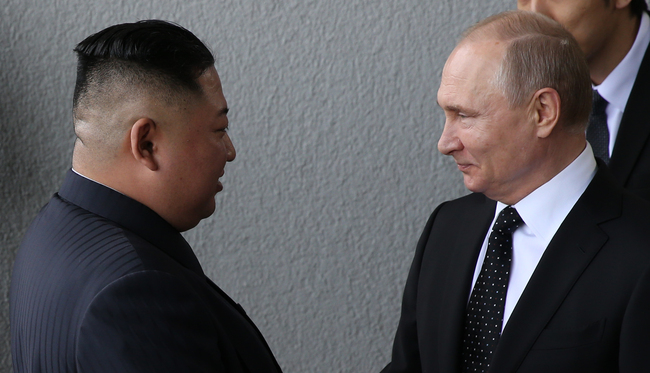
Russia is an even less a consideration for North Korea. Pyongyang manages to routinely ignore Moscow, unless it needs something from the Russians. In Pyongyang’s mind, Russia is a semi-failed entity, once proud as a true super power competitor to America, but now a power in decline. In Pyongyang’s worldview Moscow allowed itself to be stripped of its empire and is now ruled by a kleptocracy. A Russia in terminal decline may find itself yielding back to China the entirety of the Russian Far East, a territory on which China has a rightful historic claim. Russia has only a limited ability to support North Korea economically, and probably would only do so only if there was something to be gained with such an effort, at North Korea’s expense.
Japan, as already observed, is to North Korea a pariah nation, the land of the “som nomes” or island dwarfs. The latter is a traditional Korean slander that has been directed at Japan since the beginning of recorded history. As one North Korean put it to me in Beijing, “all Koreans hate Japan from the deep of our belly, not from our hearts, nor with our head”. This disparagement is stoked regularly in both Seoul and Pyongyang today and will not abate until both or either of the two Korean states believes it useful to discard such an attitude. North Korea as a nuclear weapons state is now more than a military equal to Japan, the later having been denied nuclear weapons status by the United States. Pyongyang regards this American undertaking as self-serving in that it is merely America’s way of containing its former enemy but welcomes nonetheless the constraints the United States has imposed on Japan.
In the North Korean mindset, in which Japan ranks far above South Korea in the regional scheme of things, Japan is seen as a poor second cousin to the growing economic, military and strategic reach of China. Like Russia, Pyongyang perceives that Japan’s influence and position is waning and, unlike Russia which still possesses the strategic forces that allow it to claim world power status, Japan has no ability to constrain North Korea. Tomorrow, Japan is ripe for threatening, bullying and eventually provocation.
With Japan trending toward further marginalization, nuclear North Korea as the dominant force a unified New Korea, would become the de facto third power in the region. It would be able to leverage its special security relationship with the United States to balance China, essentially replacing both Japan and South Korea as the designated strategic security partner of the United States in all of East Asia. With China checkmated, and all other nations in the region reduced to second or third tier status, Pyongyang would have delivered itself to its rightful place in the greater East Asia and world order. None of this is a farfetched future, at least in the minds of the men in Pyongyang who are given a greater vision by their growing nuclear arsenal.
All of this is a combination of the ever-evolving reality of the nuclear Northeast Asia and my considered conjecture. One may dispute my examination of what I consider to be the reality components, but I am informed by my own observations and discussions with senior U.S., Japanese, Korean and Chinese officials and commentators. On the conjecture side, I assign substantial weight to the influence of historic events and relationships, not to mention DNA-deep hostilities among the parties profiled. I also view animosities and emotion as potential determinant factors, as well as the influence that technological developments have on the mindset and calculations of all the involved parties. Even if there is disagreement on any element of this assessment, there should be consensus on the fact that we are approaching some important decision points, and that every possible path and outcome should be explored.
No Good Options, But Still…
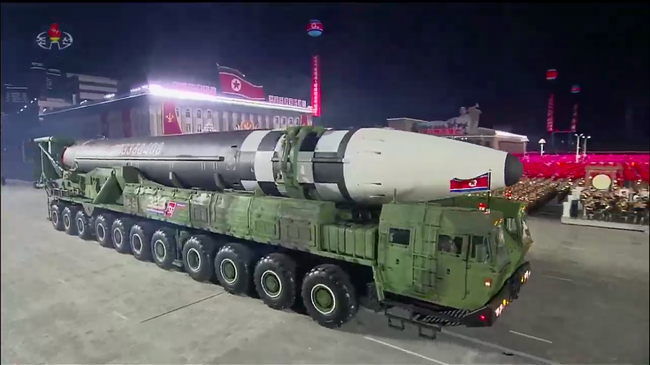
What must we now do to address the North Korean nuclear threat in the new East Asia regional security order? All parties confront a situation that has been created by a North Korean weapons program that will become ever more threatening with time, in company with an agenda that encourages its use as a tool to gain what it aspires to achieve. Some of the options mentioned above represent necessary adjustments and deterrents that will buy time and a measure of peace, but all fail as an ultimate solution.
We have reached the point that North Korea cannot be disarmed peacefully or convinced to do so through some combination of negotiated threats, concessions and compromises. Its nuclear weapons have become the core of its existence, central and essential to its survival. North Korea’s nuclear arsenal is the only remaining instrument by which Pyongyang can achieve its national destiny, the subjugation and absorption of the south. This leaves us with a reduced set of options. But there are always other options out there.
The INF System Option for Japan is one, but alternative courses of action also exist. It is time for the Japan-U.S. Alliance to explore the full range of possible solutions, and to do so in a comprehensive and decisive manner. This process cannot be further delayed. It must begin today.
![]()
![]()

▲「WEDGE Infinity」の新着記事などをお届けしています。

